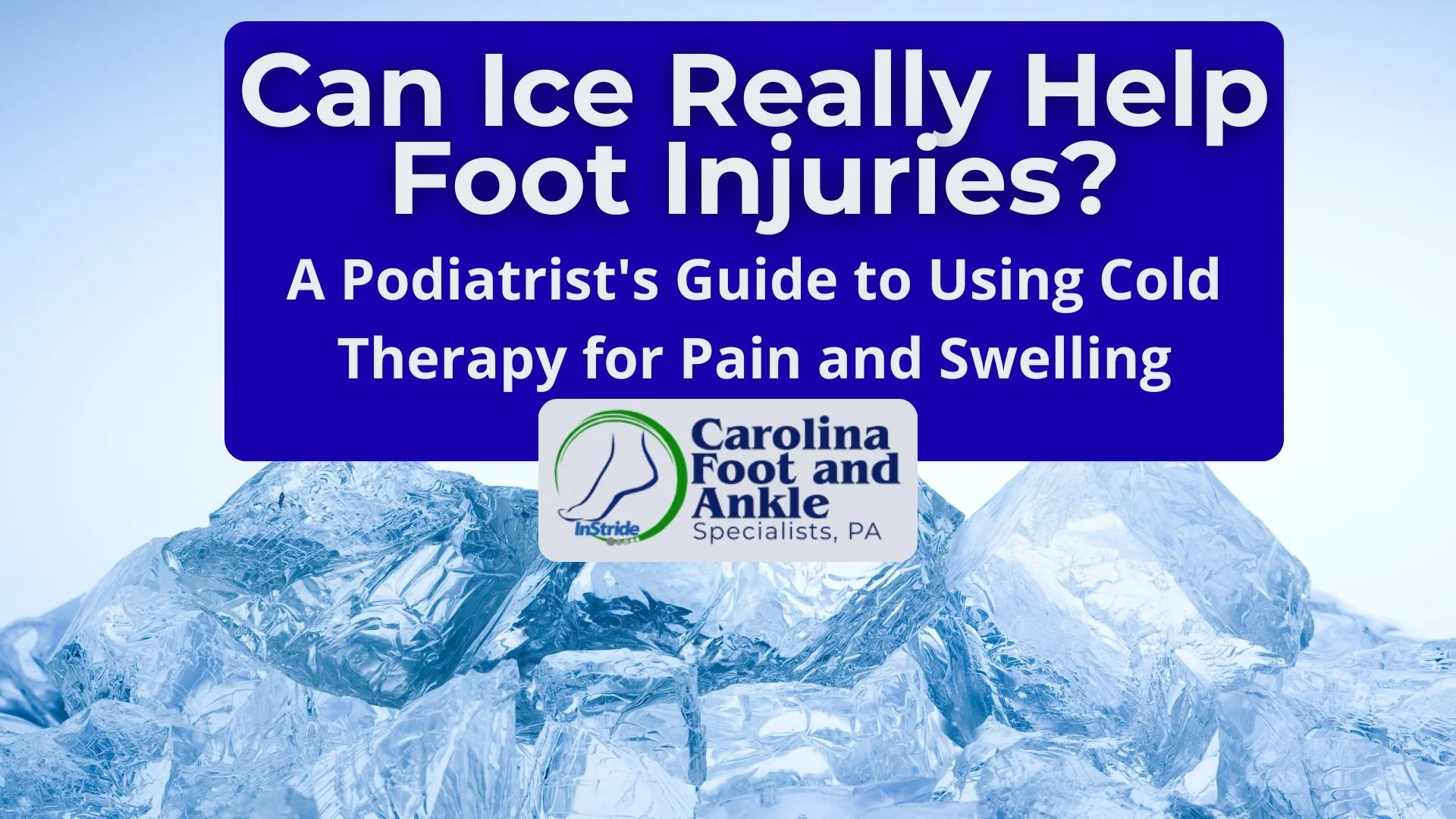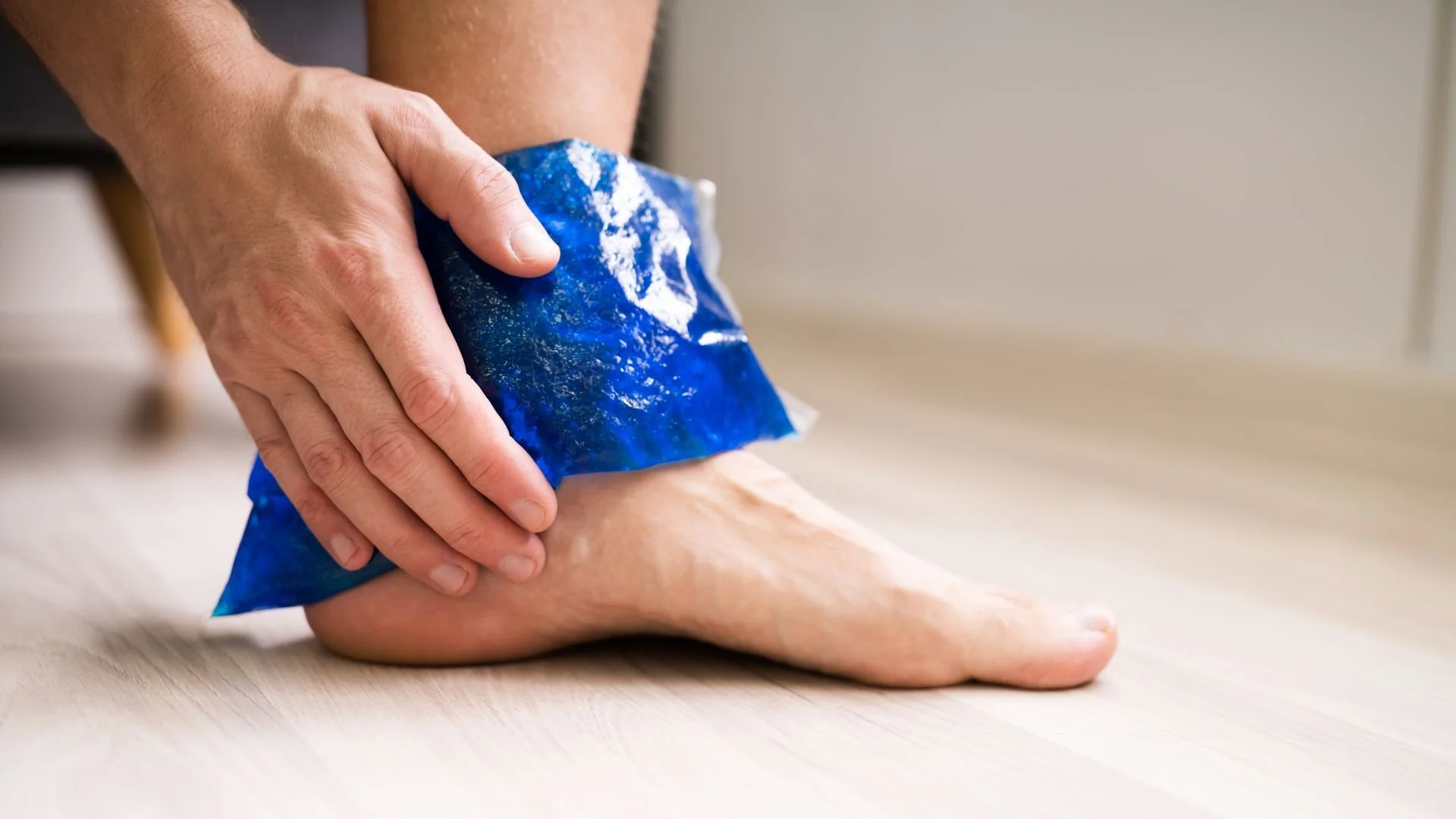Can Ice Really Help Foot Injuries?
Ice is a common home treatment for foot and ankle injuries, but is it really sufficient? Our podiatrists break down the facts.
You've probably heard it a hundred times: if you have a foot or ankle injury, you should put ice on it. It’s a go-to piece of advice, but have you ever stopped to wonder why? Does a bag of frozen peas really make a difference, or is it just something we’ve always been told to do?
At Carolina Foot and Ankle Specialists in Gastonia, we believe in providing clear guidance and actionable advice that our patients can trust. So, let’s get to the bottom of it: can ice really help foot injuries?
The Science Behind the Cold
The answer is a resounding yes! When you injure your foot or ankle, the body's immediate response is to send blood rushing to the area. This leads to swelling and inflammation, which can cause significant pain. Aside from torn ligaments, tendons, or muscles, the inflammation itself may lead to pain as well. Ice works by causing the blood vessels to constrict or narrow. This reduces blood flow to the injured area, which in turn helps to:
Reduce Swelling: By limiting the amount of fluid buildup, ice helps to keep swelling at a minimum. This is crucial because excessive swelling can restrict movement and prolong the healing process.
Decrease Pain: The cold temperature numbs the nerve endings in the affected area, providing quick and effective pain relief. This can make the initial hours and days after an injury much more comfortable.
Limit Tissue Damage: By controlling inflammation, ice can help prevent secondary tissue damage that can occur from excessive swelling and reduced blood flow to surrounding healthy cells.
We typically recommend following the R.I.C.E. protocol for new, acute injuries: Rest, Ice, Compression, and Elevation. While we'll focus on the "I" today, all four are important steps in managing an injury before you can be seen by a professional. Our podiatrists in Gastonia can provide more personalized guidance regarding rest, compression, and elevation when you schedule an appointment.
Spending time outdoors can be great to stay active, but it can also be one of the most common places where foot and ankle injuries occur.
Our Patients’ Stories: Ice in Action
(Note: Patient names and details have been changed. The following stories are an amalgamation of common patient experiences in the Gastonia area.)
The Soccer Player
"I was playing in a rec soccer league when I rolled my ankle during a game," shared one of our patients. "The pain was instant, and my ankle started to swell up fast."
Instead of waiting, he immediately went home and applied a bag of ice to his ankle for 20 minutes. He repeated this every couple of hours. When he came in for his appointment at our office the next day, the swelling was much more manageable. The ice had done its job, limiting the initial inflammation and making our examination much easier. It allowed us to accurately diagnose a minor sprain and begin his treatment plan without having to wait for the swelling to go down.
The Home Gardener
"I was doing some yard work, and a heavy pot slipped and landed right on the top of my foot," a long-time Gastonia resident told us. "It hurt like crazy, but I wasn't sure what to do."
Our advice was simple: head inside, elevate the foot, and apply ice immediately. When she visited our office the next morning, the immediate bruising and swelling were minimal, and this helped us rule out a more serious fracture. The ice had helped control the pain and inflammation, allowing us to focus on the minor soft tissue damage.
Never apply ice directly to your skin. Instead, use an ice pack or similar protective barrier.
How to Properly Apply Ice to Your Foot
Using ice correctly is just as important as using it at all. Here are our guidelines:
Use an Ice Pack or Bag of Frozen Vegetables: A bag of frozen peas or a commercial ice pack works great because it conforms to the shape of your foot.
Use a Barrier: Never apply ice directly to your skin. Wrap the ice pack in a thin towel or cloth to prevent frostbite. Some ice packs are enclosed in safe, flexible plastic that can act as a protective barrier.
Apply for 15-20 Minutes: This is the sweet spot. Any longer, and you risk damaging the skin or tissue.
Wait an Hour Between Applications: Give your skin and blood vessels time to recover before applying ice again. Repeat the process every few hours during the first 24-48 hours after the injury.
When to See Your Podiatrist
While ice is a fantastic first aid tool, it's not a cure-all. You should schedule an appointment with our team at Carolina Foot and Ankle Specialists if:
The pain is severe and you can’t put weight on your foot.
The swelling doesn’t improve after 48 hours of using the R.I.C.E. protocol.
You notice any deformities or the injury looks visibly wrong.
Don't let a minor injury turn into a major problem. Ice is your friend, but so are we. If you're dealing with foot pain or a new injury, contact our Gastonia office today for a professional evaluation and a personalized treatment plan.
Contact Carolina Foot and Ankle Specialists for Personalized Podiatry Care in Gastonia, NC
At Carolina Foot and Ankle Specialists in Gastonia, our team wants to ensure that you receive the right treatment, right away. That’s why we offer personalized exams, treatment for all types of foot conditions, and even regenerative medicine to get you back on your feet faster. Plus, you can count on us for same-day and next-day appointments in the Gastonia region.
Request an appointment online right now, or call our office at (704) 867-7388 to schedule by phone!




